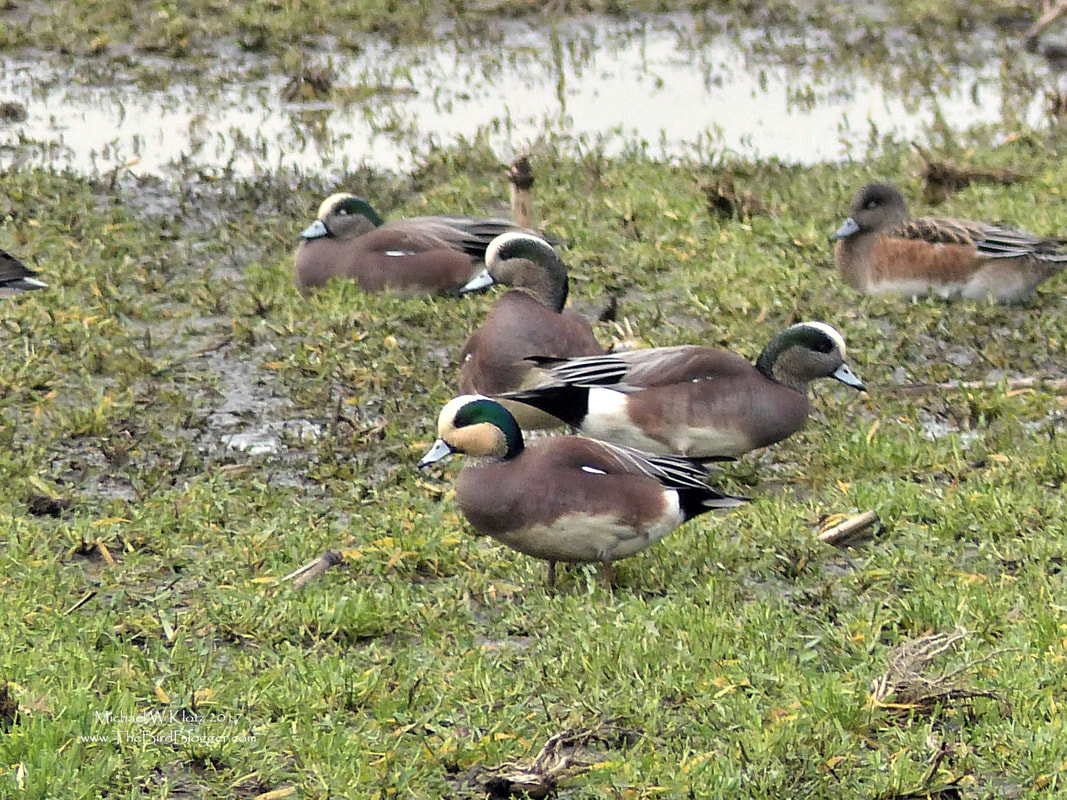This rare morph of the American Wigeon is what's call a White-cheeked or Storm Wigeon. They are relatively rare and have very little information that I can find on the internet. I have seen them before here overwintering a couple years ago and it would seem that the flocks that do have the white cheeks have several individuals with varying degrees of the white pigment covering some of the cheek with others continuing all the way to the neck. There were at least two birds of this flavor in a flock of 130 wigeon. We have more than 30,000 of these ducks wintering here and I have only seen this white check in two flocks of 80-130 birds. This would lead to the idea that it is a genetic trait. During my research however, there have been several birds through out North America's wintering grounds from Florida, California, Arizona and British Columbia which would lead to a this being a random color morph with in the greater population. Just some observations from a curious birder.
